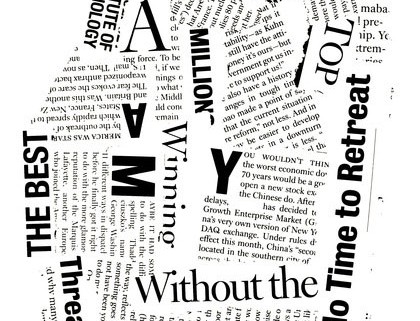Engineering & Manufacturing Influence News – Issue 5 September 2012

ISSUE 5 – SEPTEMBER 2012
The most significant development in this last month has been the release of the report on the future of Australian Manufacturing from the non-governmental taskforce set up by PM Julia Gillard. The full report of over 90 pages is the result of over 8 months work by two governmental working groups under the direction of a 25 person taskforce comprised of eight parliamentarians, eight high powered industrialists, six unionists and three academics.
The report identifies what it says is a simple strategy; “Smarter Manufacturing for a Smarter Australia” and concludes with forty-one recommendations for government action outlined over a one, four and ten year timeframes. The report is not easy to digest but the executive summary identifies a number of key future actions to be focused on the opportunities created by the Asian century:
- Building a new and stronger generation of capable manufacturing organisations
- Turning the $9.4b of investment in science and research into better applied knowledge
- Ensuring companies see good reason for continuing to invest in Australia
- Building better global supply chains
- Building a smarter and more efficient manufacturing industry
- Building more productive and collaborative workplaces
It would be very difficult for anyone to disagree with these proposals. As manufacturing is such a broad church covering at least sixteen different sectors, the report does stress that there cannot be a broad brush approach but will have to be targeted to sectors that can give the most national benefit and have the most opportunity. In this regard and with respect to Asia, it is suggested the focus should be on the following:
- Automotive components
- Clean energy and the environment
- Food and beverage
- Health and medical
- Infrastructure and Building Materials
Of course, the Vernier Society’s primary interest is in sectors associated with ‘making things’ notably in metal and so the rest of this synopsis will try to expand on issues in these sectors whilst providing facts associated with the manufacturing industry in general.
Manufacturing employs close to 1 million people or 8.5% of the working population (as compared to mining that employs 200,000) It has lost over 107,000 jobs in the last four years and the report forecasts that it may lose a further 85,600 over next five years. Manufacturing contributes over $103b of Gross Value Added (Value of goods and services produced) to the national economy or 8% of GDP and contributes 29% of Australia’s exports. The major contribution sectors to the $103b are; Food, Beverage & Tobacco $22b, Petrol, Chemical & Rubber $21b and the two sectors of main interest, Metal Products and Machinery & Equipment, both contributing $18b each.
The distribution of GVA was given over eight sectors but when the employment split is further analysed this is over sixteen sectors with the major ‘making things’ sectors employing:
| Sector | Number of people |
| Clothing and Textiles | 38,000 |
| Fabricated Metal Products | 55,000 |
| Machinery and Equipment | 110,000 |
| Furniture | 61,000 |
| Total % | 27% |
The report has a complicated forecast of reducing employment but shows that three of these sectors (excluding Machinery and Equipment) will suffer the bulk of the further losses.
Of the 945k people employed, Victoria has 310,000 in total manufacturing or nearly 32% share. When classifying roles, 25% of the people are now classed as highly skilled up from 19% ten years ago. However, the report identifies that 43% of the workforce have either numeracy or literacy skills and 50% have no formal qualifications. Finally more than 500,000 people work for small or medium sized manufacturing businesses and there are over 50,000 SME’s that employ less than 200 people.
Australian industry is currently said to be multi-speed economy with mining disguising ills in other industries. To examine this more closely the report uses analysis done by the McKinsey Global Institute Sectoral and Industry Analysis (page 33/chart 3.2) which shows some very interesting results based on two key drivers. ‘Differentiation’ that shows how differing industry sectors have different levels of value adding based on the uniqueness of the products, services and features and ‘Tradability’ that is the sectors ability to withstand competitive pressures. As the report says the chart is complex but it shows that “more than other sectors, manufacturing is dependent on its ability to succeed in traded industries”. Put another way and pertinent to Vernier, ‘making things’ sectors are highly tradable (both export and import) and so increasingly compete on differentiation of unique inputs, capabilities and consumer relationships. The report further finds that “within-industry developments have greater economic impacts that changes in the industry mix. Or put simply as Michael Porter says “How a nation or region competes in its industries matters more than the industries it competes in””. The full McKinsey report (interesting read) expands on this by identifying four areas in which government involvement can assist or hinder competition:
- ‘Setting the ground rules’ – through setting a roadmap or using regulations
- ‘Building enablers’ – R&D support and skills and training
- ‘Tilting the playing field’ – protectionism
- ‘Playing role of principal actor’ – State ownership or intervention
It will be interesting to see how the government applies these tools across various industry sectors.
While the report list 41 specific recommendations, the proposals are covered under some major policy directions:
- Meeting current pressures by helping with investment and industry participation, to reduce the risk of loss of jobs and core manufacturing capabilities.
- Lifting productivity growth and reducing business costs via economy-wide proposals in transport infrastructure, broadband, energy, regulation and taxation reform.
- Improving the benefits flowing to Australian manufacturing from our research investments including through a new platform for systemic collaboration with innovation hubs and stronger networks.
- Building a cohort of medium sized world competitive firms and improving SME competitiveness through a new SME Strategy that targets SME capability.
- Forging of a shared competitiveness culture through a new national partnership for workplaces, focused on the capabilities of managers and workers.
Editorial Comment:
The document stresses repeatedly that it is from the non government members of the taskforce, which are primarily industry leaders and union leaders. The report is likely to therefore be a compromise between what at times must be opposing views. The report suggests that is will not be recommending radical change, rather iterative, albeit innovative steps and this is what is delivered. In fairness, in the detailed expansion of the overarching policy directions listed above, there are many good recommendations, particularly around the linking of research and innovation more directly to the needs of business and industry sectors in which Australia hold or have the potential to hold, a global competitive advantage.
Detailed reading of the report reveals a number of issues to the editor:
From the report is seems there are currently a myriad of government funded organisations that seem to operate across the manufacturing spectrum offering opportunities to industries and businesses. Organisations such as AMTIL, CSIRO and Austrade are well known, but the report mentions among others;
- Manufacturing Technology Innovation Centre (MTIC)
- Enterprise Connect
- Australian Manufacturing and Materials Innovation Precinct (AMMIP)
- Victorian Smart SME’s Market Validation Program
- Researchers in Business Program
- Defence, Science and Technology Organisation (DSTO),
- Australian Research Council Centre of Excellence (ARCCE)
- Commercialisation Australia
Besides this there are private organisations such as Insight Economics who provided information (one assumes paid for) to this report.
How can all these separately funded organisations be well managed so as to not to duplicate purpose, be well monitored and regulated and still ensure focus on benefit to the comprehensive manufacturing sector? This seems to me to be a classic example of bureaucratic madness and the task of controlling these separate organisations must be huge. One of the organisations mentioned is the ARRCE – a Centre of Excellence for Knowledge. One of the 2011 funded projects listed on their website is a $24m, 7 year study into the ‘History of Emotions’ by the University of WA. However valuable this research may be, I would have thought there were more beneficial uses for the money directly associated with manufacturing.
The report clearly identifies that Australia has gone backwards in productivity growth and international competiveness in which we have slipped from 5th in the world a decade ago to 20th today. The analysis provided suggests specific comparative Australian weaknesses are in innovation, technological readiness and business sophistication (which has been translated in the report into management capabilities?). The report, interestingly, quotes a Treasury Secretary suggesting that “we will get the biggest benefits from reform efforts, not in the same areas as the past but in areas that we have not yet focused on”. Yet the report completely avoids any suggestions that our system of industrial relations should be an area for review and overhaul. It can be reasonably assumed that consensus could never have been reached amongst the non government members on such a provocative issue and would probably have been vetoed from the report by the government anyway, but it seems such a denial to the elephant in the room! How can a system based on bargaining, on adversarial relations and ambit claims ever lead to a collaborative and progressive culture? We now live in a world of instantaneous global connection; a 24/7 world of commerce and of societal interaction yet we still see the working week as Monday to Friday and 37 hours.
The report quite rightly suggests that knowledge, innovation, design capability and skills are what will differentiate us in a highly competitive world and there are numerous good ideas including the setting up of innovation hubs for various competitive strengths to collect and disseminate knowledge for the benefit of Australian businesses. Unfortunately, the report also recognises that that such innovation takes time to set up and accelerate and 4 years is a realistic timescale. Of course, these actual benefits will also need to be recognised and agreed and governments are always reticent of choosing such capabilities for fear of failure. Also governments seem to be using the economic climate for cost reduction rather than investment spending. But a very good point was made by Mark Carnegie (Q&A 24/9) that investing in education (in this case the Gonsky Report) should be seen as vital for the future, regardless of the debt. Surely this argument applies to manufacturing. Leading the world in tradable engineering products based on leading edge knowledge and innovation is the key to the future prosperity. Unfortunately, I cannot see either of our political parties having the courage to shed the baggage of the past nor the visionary intellect for the future to lead Australian manufacturing into a resurgent twenty first century.



